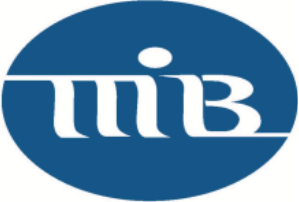Multiple institutional relationships influence bond yields.
Bond yields have risen, and the interest rate curve has steepened thus far in 2021. For all the discourse about cause and effect, the most popular and logical explanation is that the Federal Reserve’s insistence on maintaining an easy money policy, coupled with record fiscal stimulus, is likely to unleash a torrent of inflation sometime soon. Therefore, longer-term investors have demanded a higher return to compensate them for the perceived greater exposure to purchasing power erosion.
As it relates to community bank bond portfolios, there is a lot more at play. We have talked about tight spreads and supply shortages in specific investment sectors in this column very recently, but we’ve not – yet – mentioned the impact that non-depository investors have had. It may be a bit difficult to quantify precisely how much our bond yields are influenced by nonbank buyers, but it is worth a look into global demand for the securities that your bank quite possibly owns. At a minimum, they form a baseline from which virtually all of your assets and liabilities are priced.
In our court
The relationship between an issuer and investor with the most significant impact on domestic bond yields is probably also the most visible. As the Treasury’s borrowing needs have skyrocketed since 2019 – and really since 2008 – it is a good thing for you and me as obligors that we have had a deep-pocketed buyer at the ready. That would be the Federal Reserve. In the current economic environment, the two entities are acting independently yet cohesively.
This two-player game evokes the basketball strategy known as the pick-and-roll. The pick-and-roll was perfected by Hall of Famers John Stockton and Karl “The Mailman” Malone in the 1980s. Executed properly, it is impossible to stop. In shorthand, this entails the player with the ball receiving a block, or “pick,” from a teammate, who then “rolls” to the basket to get a pass – unguarded – for an easy hoop. In our world, the Treasury Department has the ball. The Fed sets the pick, goes to the basket and scores.
Plenty of participation
To be sure, several entities roll à la Karl Malone. The Fed is, by far, the single biggest investor in Treasury securities but by no means owns the majority of our debt. In fact, as of Dec. 2020, the Federal Reserve owned about 19% of Treasury’s borrowings. Five years before that, the number was about 16%, so while the Fed’s balance sheet is at an all-time high, it does not own much more of the total pie than it did in 2015.
What that means is that other buyers have stepped up their “roll” as well. What may surprise you to learn is that it is not other foreign governments. Those central banks, which are popularly believed to own record amounts of dollar-denominated bonds, have actually shrunk their share of our debt from 41% in 2015 to 29% today. And the two largest sovereign owners, Japan and China, amazingly hold fewer treasuries in absolute amounts than they did six years ago.
Positive returns
So who’s growing their stockpiles of our debt? Bloomberg reports that it’s a variety of institutional buyers other than central banks. Large, diversified investors, state and private pension funds, mutual funds and insurance companies are examples. In aggregate, they have been entrusted with investing vast amounts of money, and in the first half of 2021, the allure of treasury securities, particularly those with positive real returns, has been difficult to ignore.
As of this writing, the yield on the 10-year Treasury note is higher than inflation for the first time in several years. Among G8 economies, U.S. debt securities are not only the highest yielding, they are easily the most liquid, not to mention the most available. So, while it is understandable for bond buyers to be attuned to the possibility of inflation being “loosed,” we have some things working in our favor to keep bond prices at least theoretically supported.
Huge sums of institutional money are likely to be looking for safe havens for the foreseeable future. Aging global populations, higher national savings rates, and a Fed policy that subsidizes short interest rates and invests in longer-duration securities are part of this dialogue. Ultimately, community banks stand to benefit from modestly higher rates, with some likely price protection from institutional investors. The Mailman going to the basket for a score off the pick-and-roll is part of portfolio management dynamics in 2021.
Jim Reber, CPA, CFA, is president and CEO of ICBA Securities, ICBA’s institutional, fixed-income broker-dealer for community banks. He can be reached at jreber@icbasecurities.com.










